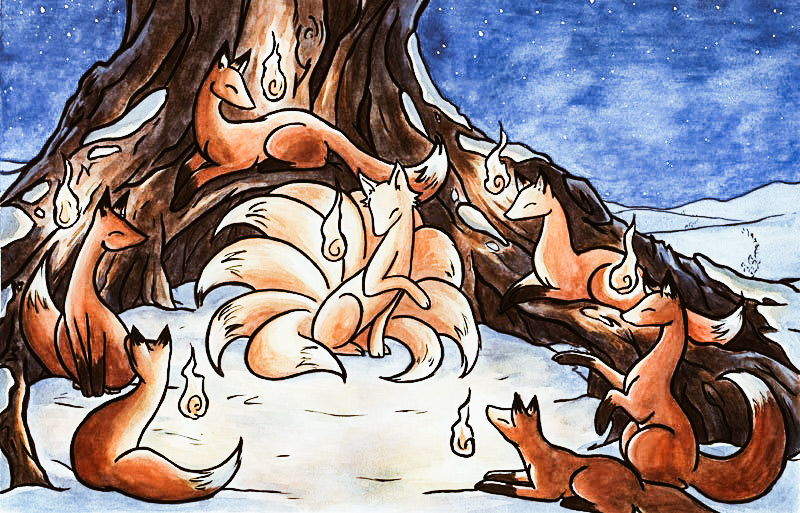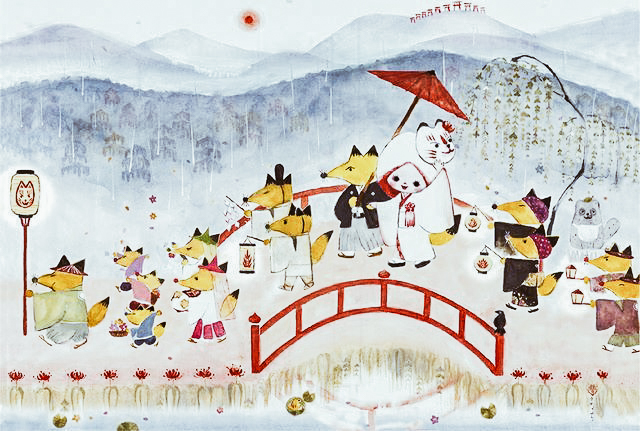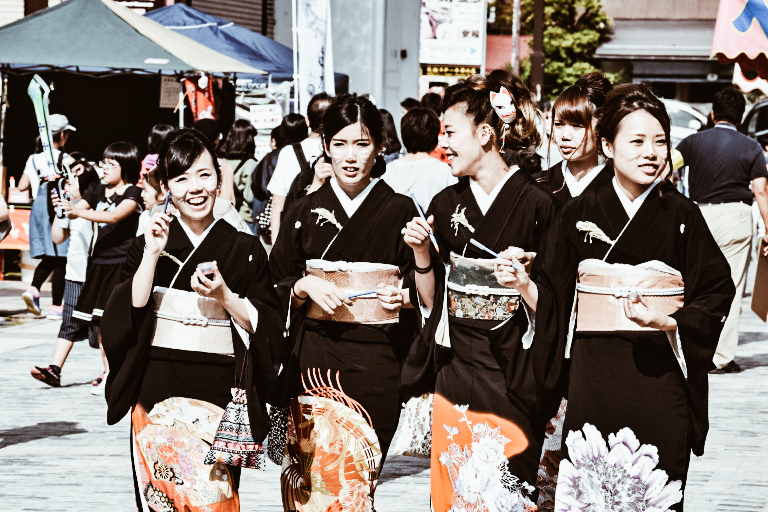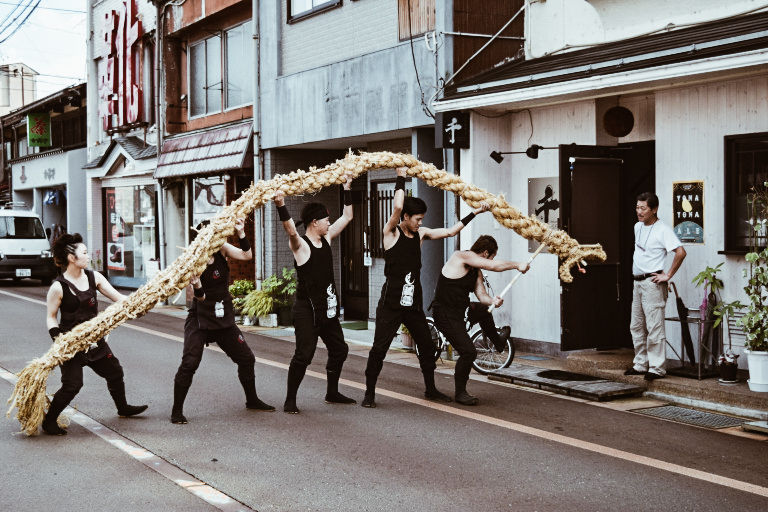Kitsunebi Matsuri, quando il folklore prende vita
Nell’antico folklore giapponese, il Kitsunebi (狐火, fuoco di volpe) era uno yōkai che, durante la notte, appariva improvvisamente sotto forma di luce incandescente dal colore rosso-arancione e talvolta anche blu. I Kitsunebi aumentavano gradualmente fino a coprire vaste aree, raggiungendo anche i 4km! Si credeva che fossero torce di una processione di volpi che marciavano per le proprie nozze. Le luci venivano avvistate dagli agricoltori sulle montagne ed erano considerate un buon presagio per il raccolto. Infatti, maggiore era il numero di luci vista, più fruttuoso era il raccolto. Tuttavia a nessun umano era concesso di avvicinarsi: coloro che ci provavano erano condannati a svanire.

photo credits: tradurreilgiappone.com
In particolare, nelle storie si racconta del matrimonio tra Otonosama, il re che viveva a Furukawa, e Okon, la figlia del dio volpe. Questa affascinante immagine è l’origine su cui affonda le sue radici l’Hida Furukawa Kitsunebi Matsuri (騨古川きつね火まつり). Questo festival si celebra ogni anno, il quarto sabato di settembre a Hida Furukawa, cittadina pittoresca e rurale ricca di splendidi paesaggi, dove ancora oggi si respira una vita lontana dalla frenesia delle metropoli.

photo credits: tradurreilgiappone.com
Felicità e prosperità!
Come quasi tutti i festival a cui ormai siamo abituati, anche il Kitsunebi Matsuri ha come scopo le benedizioni per il raccolto, la felicità e la prosperità per le famiglie.

photo credits: myjapantravels.wordpress.com
Ma in cosa consiste esattamente il Kitsunebi Matsuri?
Prima di tutto, tutti i partecipanti hanno i baffi di volpe disegnati sul volto, che sia bambini o anziani, negozianti sulla strada oppure turisti. Si comincia con la benedizione delle imprese locali: i danzatori trasportano porta a porta un dongamaki, serpente di corda lungo 5 metri.

photo credits: myjapantravels.wordpress.com
Dopo di chè ha inizio l’evento principale. Su due piedi si potrebbe dire che si tratti di un matrimonio, ma non uno comune, bensì una processione solenne in cui si celebrano le nozze delle volpi, il Kitsune no Yomeiri.

photo credits: myjapantravels.wordpress.com
I futuri sposi, una coppia legata nella vita reale, vengono scelti da un pool di candidati a livello nazionale nella cittadina in cui si terrà la cerimonia nuziale. La lunga marcia condurrà la sposa dallo sposo al calare della notte, quando il Kistunebi ha inizio (una fiaccolata). Coloro che assistono a tutta la processione saranno benedetti e potranno esprimere un desiderio come un buon raccolto, oppure la felicità per la propria famiglia o la prosperità negli affari.

photo credits: tokyopic.com
Una romantica curiosità
Dal 1392, per tutto il periodo Muromachi fino alla fine del XIX secolo, quando le cerimonie nuziali occidentali sostituirono le tradizionali cerimonie giapponesi, i matrimoni si tenevano di notte e la sposa veniva scortata nella sua nuova casa da una parata di luci.
Condividi:
- Fai clic per condividere su Facebook (Si apre in una nuova finestra)
- Fai clic qui per condividere su Twitter (Si apre in una nuova finestra)
- Fai clic qui per condividere su Tumblr (Si apre in una nuova finestra)
- Fai clic qui per condividere su Pinterest (Si apre in una nuova finestra)
- Fai clic per condividere su Telegram (Si apre in una nuova finestra)
- Fai clic per condividere su WhatsApp (Si apre in una nuova finestra)
- Fai clic qui per condividere su Reddit (Si apre in una nuova finestra)
- Fai clic qui per stampare (Si apre in una nuova finestra)






